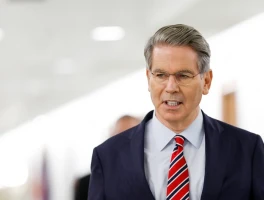Okay, so Treasury Secretary Bessent is talking "warp speed" on getting the U.S. out from under China's thumb when it comes to rare earth minerals. That's what he told CNN on Sunday, and then doubled down on Fox News, also name-dropping the specter of "communism" in the Democratic party. Let's try to unpack this.
The Truce That Wasn't?
First, the backdrop: President Trump (still feels weird to say that in 2025, doesn't it?) announced a framework trade deal with China early Thursday. The headline grabber? A one-year truce on export controls for rare earth minerals and some chip tech, plus China promising to buy U.S. soybeans. Sounds like a win, right? Except Chinese leader Xi Jinping immediately cautioned other nations against siding with the U.S. at a summit a day later.
The problem here is that these "truces" have the lifespan of a mayfly. Recent ones haven't lasted more than a few months before collapsing into a fresh round of escalation. Bessent himself says the U.S. doesn't want to "de-couple" (he prefers "de-risk"), but then declares "warp speed" on rare earths. That's a pretty mixed signal.
Is this just political theater? Maybe. But let's look at the underlying economics of rare earth minerals.
De-Risking or De-Coupling: The Rare Earth Equation
Bessent's core point is that China is an "unreliable partner" and the U.S. needs to escape its control of rare earth minerals. (The parenthetical clarification here is that rare earth minerals are used in everything from smartphones to electric vehicles to military hardware.) The U.S. Geological Survey estimates that China accounts for over 70% of global rare earth production. That’s a massive chokehold.
But how realistic is "warp speed"? Mining and processing rare earths isn't exactly like setting up a lemonade stand. It requires significant investment, specialized expertise, and, crucially, navigating environmental regulations. The Mountain Pass mine in California is currently the only operating rare earth mine in the US. Increasing its output, or opening new mines, will take years, not months. Bessent says "one to two years." I'd bet against that timeline.

And this is the part of the report that I find genuinely puzzling. If the administration knew that the one-year truce was likely to fail, why agree to it in the first place? Was it simply to placate soybean farmers in key electoral states? Or was it a deliberate feint, designed to lull China into a false sense of security before launching a "warp speed" initiative? Details on the internal deliberations remain scarce, but the timeline raises some serious questions about the administration's strategic coherence.
The administration's plan is not just about mining, but also about processing. The U.S. currently sends much of its mined rare earths to China for processing. Building domestic processing capacity is crucial, but again, this requires significant capital and time.
Bessent's statements also raise the question of cost. Diversifying supply chains and building domestic processing capacity will inevitably be more expensive than relying on China. How much more expensive? That’s the multi-billion dollar question no one seems to be answering directly. Will consumers be willing to pay more for products made with non-Chinese rare earths? Will the government subsidize the industry? China has been an "unreliable partner" in many ways, Bessent says - Axios
Bessent's "Warp Speed" Plan: A Quantum Leap or a Black Hole?
Ultimately, Bessent’s "warp speed" plan feels more like a political slogan than a concrete strategy. The underlying problem – China's dominance of the rare earth market – is real. And diversifying supply chains is a sensible goal. But achieving that goal in one to two years, as Bessent claims, seems wildly optimistic.
A more realistic scenario is a gradual shift, with the U.S. slowly increasing domestic production and diversifying its sources of supply. This will require sustained investment, careful planning, and a willingness to accept higher costs. Whether the administration is truly committed to this long-term effort remains to be seen.



